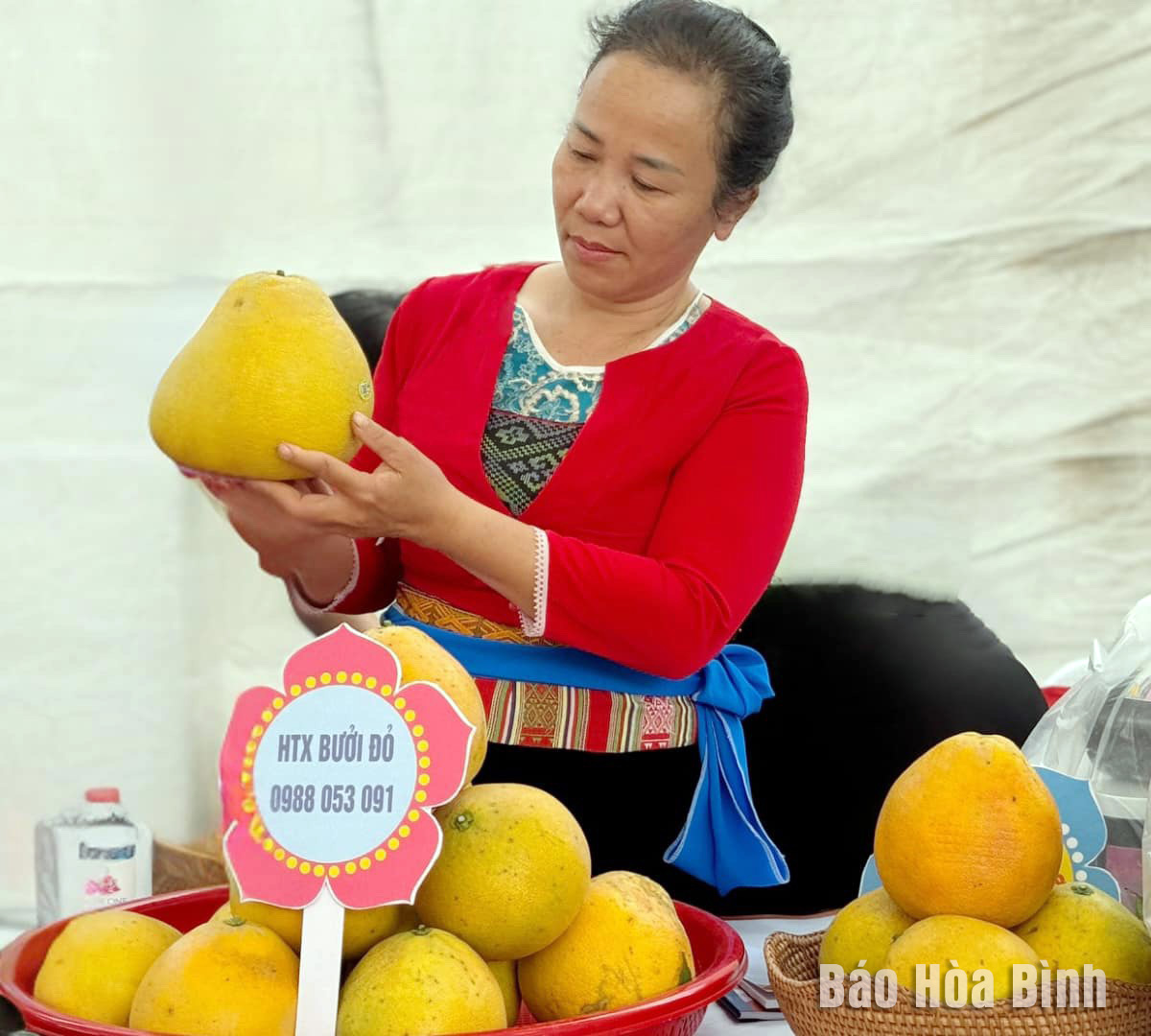



When ripe, Tan Lac red grapefruit turns yellow, and its flesh becomes a pinkish-red, juicy, and easily separated, with a refreshing, sweet taste.
When ripe, the red grapefruit’s skin turns yellow, and its flesh becomes a pinkish-red, juicy and easily separated, with a refreshing, sweet taste. Each fruit typically weighs between 0.7 and 1.5 kg. Farmers utilise techniques to ensure high quality and safety, meeting increasing market demands, making the fruit a popular choice among consumers.
Since 2010, red grapefruit cultivation in Tan Lac has expanded significantly. By 2017, the Intellectual Property Office of Vietnam recognised the "Tan Lac Red Grapefruit" collective trademark, which not only affirmed the fruit's quality but also opened up opportunities for promoting and expanding local product markets. The year 2022 marked the first shipment of Tan Lac red grapefruits, weighing over 7 tonnes, to the UK.
The development of red grapefruit farming has been instrumental in restructuring crop production, boosting the local economy, creating jobs, and reducing poverty. It remains a key crop with high economic potential, beloved by consumers both locally and nationwide.
According to Head of the district Division of Agricultural and Rural Development Dinh Cong Thao, as of 2024, more than 217ha of local red grapefruit are certified under VietGAP and organic standards, and have designated codes for domestic and export markets. The district's total citrus fruit area exceeds 1,520ha, with red grapefruit accounting for nearly 1,110ha. In 2024, grapefruit production hit over 17,600 tonnes, with an average value of 194.45 million VND (7,720 USD) per ha.
Tan Lac’s cooperative farming models, such as the Tan Huong 1, Tan Phong, and Tan Dong, ensure strict monitoring of cultivation practices and disease prevention.
To improve the productivity, quality, and effectiveness of Tan Lac red grapefruit, the district aims not to expand the cultivation area but to invest in and intensify existing orchards with advanced agricultural techniques. The focus is on increasing yield, ensuring quality, and making the grapefruit a key crop and a representative OCOP product.
The district will assess cultivation areas unnder planning schemes and provide optimal solutions for farmers to invest in and intensify their orchards. Additionally, a nursery will be established to preserve the Tan Lac grapefruit variety.
Efforts will also be made to replace aging orchards with lower-quality fruit, prioritise developing model gardens, improve product preservation and processing, and protect the collective trademark while working towards obtaining a geographical indication certification for Tan Lac grapefruit.